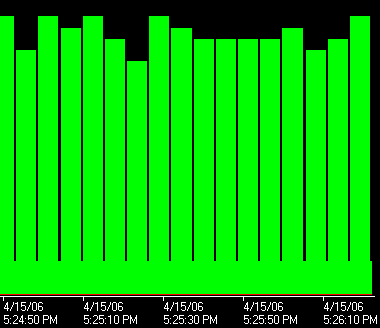joemck2004
Technical User
I have a D-Link AirPlus G DWL-G122 USB WiFi adaptor connecting to a Linksys WRT54G router. The signal strength is almost always low or very low on Windows XP's bar meter (around -80 dB in NetStumbler).
When it first connects, the speed is around 5.5-18 Mbit and everything works fine. Often within minutes, the speed has climbed to 36-54 Mbit, and no packets ever get through. The only way to get it to work again is to disconnect from the network and reconnect. Quite irritating, especially when I'm trying to do large unattended transfers.
I currently have the router's transmit rate set to 11 Mbit, and right now I'm looking at a dead connection sitting at 54 Mbit. It seems that this adaptor won't obey the speeds set by the router.
Is there any way to get this adaptor to behave? I'd like to limit its connection speed or make it connect as an 802.11b, but I can't find options to do this.
---
Details: I'm running Windows XP Home. The adaptor is revision B and I'm using the latest driver. I have the Wireless Zero Configuration service off because it kept trying to connect to neighbors' encrypted networks. I'm using the utility program that came with the adaptor to configure it.
When it first connects, the speed is around 5.5-18 Mbit and everything works fine. Often within minutes, the speed has climbed to 36-54 Mbit, and no packets ever get through. The only way to get it to work again is to disconnect from the network and reconnect. Quite irritating, especially when I'm trying to do large unattended transfers.
I currently have the router's transmit rate set to 11 Mbit, and right now I'm looking at a dead connection sitting at 54 Mbit. It seems that this adaptor won't obey the speeds set by the router.
Is there any way to get this adaptor to behave? I'd like to limit its connection speed or make it connect as an 802.11b, but I can't find options to do this.
---
Details: I'm running Windows XP Home. The adaptor is revision B and I'm using the latest driver. I have the Wireless Zero Configuration service off because it kept trying to connect to neighbors' encrypted networks. I'm using the utility program that came with the adaptor to configure it.

